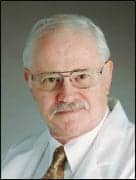 |
Sometimes you get offers that you really can’t refuse. In late February 2007, we got one such offer. Hamilton Medical, Reno, Nev, offered to let us sit in and participate in one of its Clinical Experts Workshops on “Intelligent Ventilation.” So on March 25, Bethene Gregg, PhD, RRT, and I hopped on a plane in Kansas City and 6 hours later found ourselves in Reno, the site of the workshop. The meeting was scheduled to start on March 26 with a reception at 8 pm, and the lectures were scheduled for March 27 and 28. Due to the demands of air travel, however, we were “forced” to come to Reno the evening of the 25th. Unfortunately, the cab driver took us to the wrong hotel, so the nice folks at this hotel contacted the nice folks at our real hotel, who sent a limo to transfer us—who says nothing good ever happens? This incident was the start of a very interesting, educational, and collegial few days.
Since the meeting was not scheduled to start until the night of March 26, we had a whole day to kill, so we rented a car and drove to Lake Tahoe for a tour and lunch. The lunch was great, and the driving tour very adventuresome. Within the space of a mile or so on a winding mountain road, we encountered bright sunshine, rain, hail, sleet, snow, and more sunshine. Lake Tahoe was awesome. We made it back to Reno in time to clean up and have a “wee bit of rest” before going to a welcome reception that evening.
The workshop fee included breakfasts, buffet lunches, 10.5 AARC CRCE credits, workshop handouts and supplemental materials, a certificate of attendance, and free attendance at other Hamilton educational symposiums for the remainder of 2007.
The Workshop
On Tuesday after an early breakfast, we gathered with our 53 fellow attendees for the start of 2 days of exciting and educational presentations and workshops. Faculty on Tuesday included Richard Branson, MS, RRT, FCCM, FAARC; Robert Chatburn, RRT, NPS, FAARC; Dave Grooms, BS, RRT; Jeff Hoydu, RRT; Yuh-Chin “Tony” Huang, MD, MHA, FCCP; Dan Kidwell, RRT; and Tim Opt’Holt, EdD, RRT, AE-C, FAARC. Paul Gabarini, MS, RRT, of Hamilton Medical served as host, moderator, and lecturer.
Tuesday’s eight lectures comprised five presentations on the concepts and scientific footings of mechanical ventilation and three that concentrated on change agency in the ICU, use of the pressure-volume tool in lung recruitment, and optimizing patient/ventilator management using adaptive support ventilation (ASV).
Wednesday’s program started with a discussion regarding implementing ASV by Steve Shane, MD, of Reno’s Renown Regional Medical Center’s pediatric intensive care service. This was followed by five workshop sessions that enabled the attendees to explore various features and applications of the ASV-enabled Hamilton Galileo® ventilator.
In small-group, rotating sessions, we surveyed the following topics:
- ASV setup and safety rules
- Measuring and displaying pulmonary mechanics
- Use of the pressure-volume tools (I and II)
- Waveform analysis
- ASV simulations and monitoring
Upon completion of the workshops, what was scheduled to be a brief closing remarks session evolved into a prolonged and energetic discussion session involving workshop faculty, attendees, and Hamilton staff.
Educational Tools and Materials
Hamilton provided the attendees with a wide variety of take-home resources:
- A 42-page pocket/users guide to adaptive support ventilation.
- Several marketing brochures with some excellent and informative screen shot-type illustration (P/V Tools [four pages]) and an eight-page handout on ASV-intelligent ventilation.
- A copy of Wysocki and Brunner’s article “Closed Loop Ventilation: An Emerging Standard of Care” (Crit Care Clin. 2007;23:223-40).
- A CD titled “Intelligent Ventilation: Measurements of Respiratory Mechanics During Mechanical Ventilation,” by Giorgio A. Lotti, MD.
- A CD covering recorded presentations and discussions during the February 2007 Hamilton Clinical Experts Workshop in Orlando.
Conclusions
Perhaps the most important and intriguing discussion was that involving the concept of “closed-loop” ventilation. The closed-loop concept essentially suggests that advanced technology can monitor and modify its own function to achieve preset goals.
Does this automation pose a threat to respiratory care practitioners? I think not. If anything, closed-loop ventilation will help refine our assessment and analysis skills. The ability to set and monitor rational goals and strategies is the direction that respiratory care has been headed since its inception. Having smarter tools can only enhance these abilities.
Paul Mathews, PhD, RRT, FAARC, FCCM, FCCP, is associate professor, respiratory care education, University of Kansas School of Allied Health, Kansas City.










